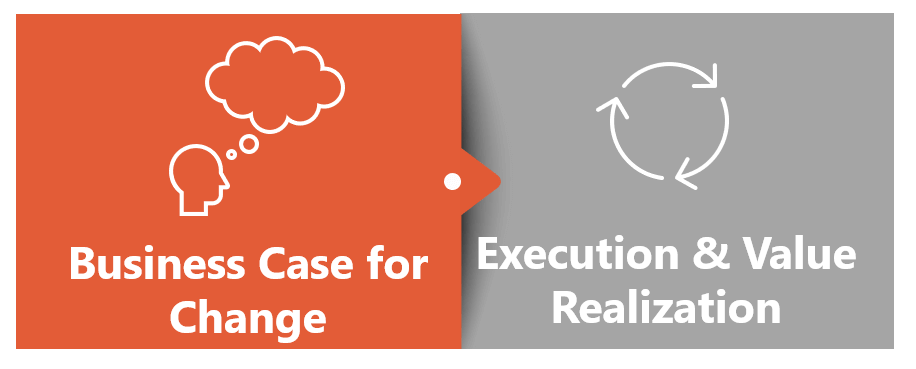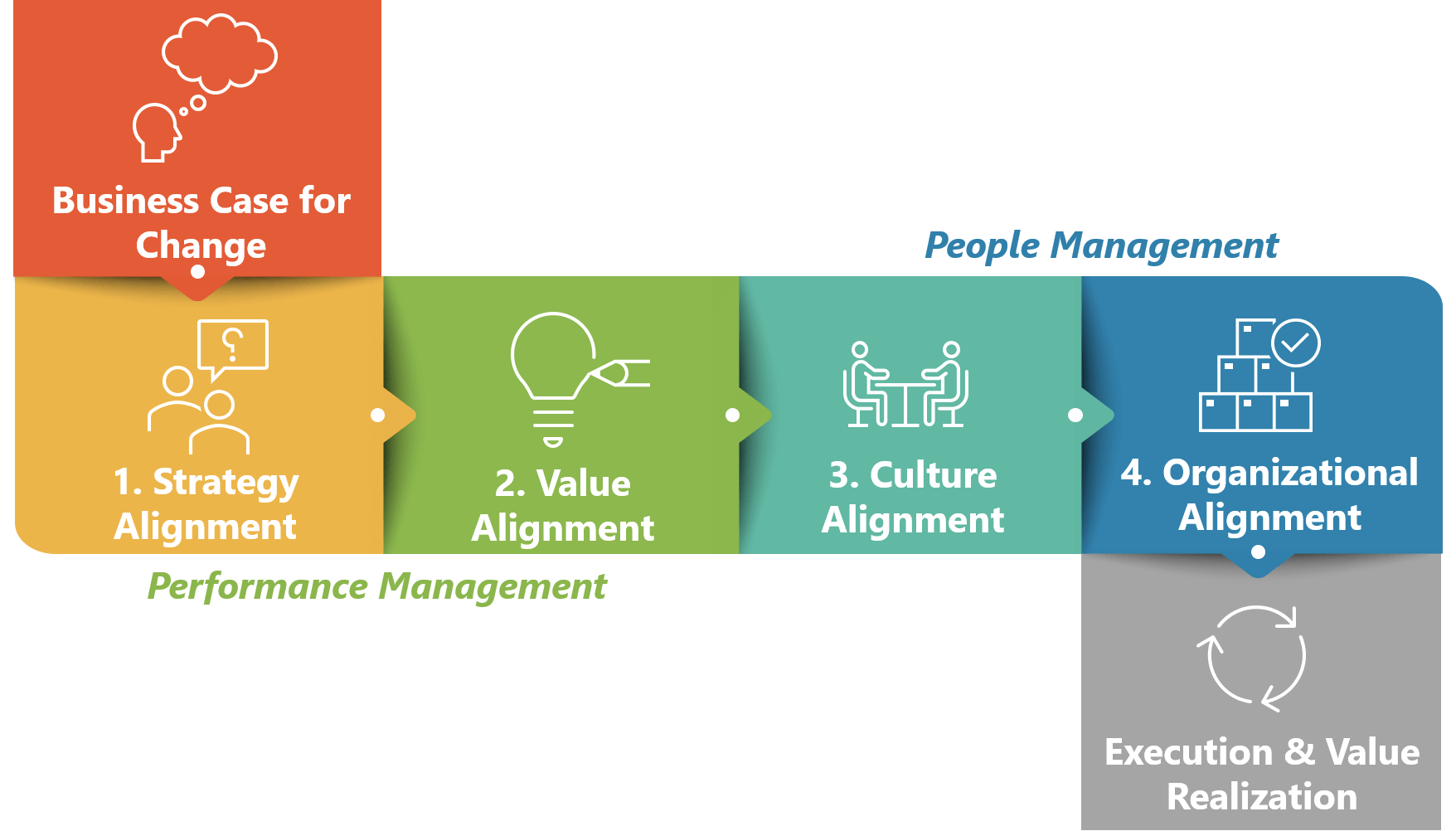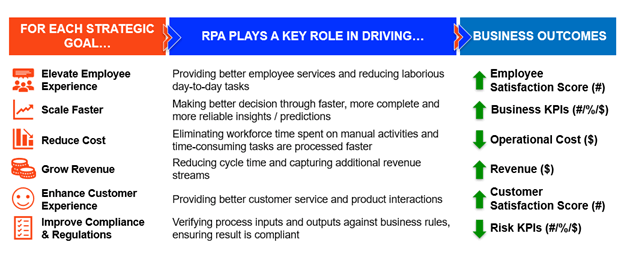How to Advocate for Automation to Your CFO (Part Two)

This is the second article in a three-part series. The series is a guide for enterprise leaders who will be advocating for automation as an enterprise-wide capability to the chief financial officer (CFO). Part one of the series was about understanding your audience and preparing for the all-important presentation to ask for budget.
In this article, we will dive into the details of how to structure the conversation about automation with the CFO.
You will no doubt start the conversation with the CFO by laying out the business case for change. This will address the “why anything, why now, and why this” questions explained in detail in part one of this series.
Next, conventional wisdom would be to explain important supporting detail around:
Execution–the program details related to how the technology will be implemented and supported
Value realization–the financial details around level of value delivered across years

My experience is that as soon as you go down this path, the CFO will begin to ask great questions such as:
How soon will the organization be ready to deliver the value promised by automation?
How sure are we (as an organization) that we can execute on this given competing priorities and resource constraints?
How much will it cost in time and resources to ‘stand up’ this capability and then support it long term (at the level required to be world class)?
What concern is underpinning each of these questions? The answer is risk.
Nothing in the mind of a CFO is more pressing and clearer than the imperative to manage risk–especially during the pandemic. The CFO must preserve cash, keep employees safe, and provide a return on capital. And they need to do it all while safeguarding the supply chain and fortifying the infrastructure for business continuity. How the CFO is managing risk matters to the organization’s board, investors, and certainly to the business unit leaders.
This may be counterintuitive, but once you have made the high-level business case for change (the subject of part one of this series), resist the urge to dig into the details on execution and value realization. I know it is hard, but this means holding off on that Gannt chart for the implementation plan you worked so hard on with the consultants .
Yes, those beautiful cash flow statements tallying up the costs and benefits over five years with a positive net present value may need to wait just a bit as well.
My recommendation is that you will be better served to proactively address a risk mitigation strategy.
It takes a certain confidence to acknowledge risks but there is an important payoff. I find that when you know that safeguarding the CFO’s investment is at the core of your presentation, it forces you to have different conversations with different people in your organization than you otherwise might have.
Clearly, a successful automation program is not the result of a single presentation to the CFO. However, it can be used as a forcing function to make decisions on how automation will impact performance management and people management.
But how do you frame this conversation? Not to worry, in this article I'm giving you a secret weapon I call 'the four cornerstones of alignment.'
As you can see in the storyboard diagram below, cornerstones one and two represent performance management, namely linking strategy to execution. Cornerstones three and four represent people management (and the key to broad adoption).

Strategy alignment
Envision a hypothetical annual management retreat where the CFO and the rest of the executive leadership team gather to build consensus on corporate strategy, address tough market issues, and set three- to five-year financial plans. This corporate strategy process typically proceeds and sets in motion a distinct business unit level planning process.
When I speak with successful automation leaders, they share that it is important to take advantage of this window of opportunity to link automation to strategy. Both the corporate and business unit strategic discussions will determine allocation of budget, shape corporate culture, and drive behaviors throughout the organization.
Automation programs receive larger funding allocations when they are aligned with the corporate strategic goals.
Aside from funding, the alignment helps to ensure prioritization and adoption by both IT and business teams. If people understand the core outcomes of embracing automation, it can even help with cultural adoption. This overt link to strategy is key because it mitigates risk for the CFO that the automation program is viewed only as an IT project.
The CFO uses these strategic planning and budgeting sessions to instill operational rigor and accountability throughout the organization. In many companies, automation programs are thriving because of their relevance to strategy and a disciplined approach to align to enterprise value.
I recently moderated a panel discussion with Junaid Ahmed, Corporate Vice President (VP) of Finance at Applied Materials, where he said it best:
“Don’t create a new story.”
In the video, below, Ahmed underscores the importance of communicating how the automation program has a “direct correlation to corporate goals in a very tangible way.”

Value alignment
Over the years, I have been humbled to be invited to speak at a few of these annual management retreats. One time stands out to me because I was able to create a workshop for C-suite and persuaded famed Harvard Business School professor and co-creator of the Balanced Scorecard, Dr. Robert Kaplan, to join as a guest speaker.
The Balanced Scorecard is one way to manage strategy implementation. The Balanced Scorecard challenges the executive leadership team to translate their strategic plan into specific measures and initiatives along four perspectives:
Financial
Customer
Internal processes
Learning and growth
Whether your company uses this methodology or another, the presentation to the CFO should include a demand plan for Robotic Process Automation (RPA) that makes an impact on those specific measures and initiatives. A compelling way to communicate the vision for the automation program is to align to the financial and non-financial key performance indicators (KPIs) that impact the strategic plan.
Lower the risk for the CFO by giving a line of sight on how RPA will align with the most impactful strategic goals. The table below provides an example of how to accomplish that. Identifying KPIs establishes credentials for the RPA program and gives directional guidance on the business outcomes that automation will help deliver.

Want to get a better view? See a larger version of this image.
Culture alignment
The third cornerstone of alignment turns the focus to people. As part of the executive leadership team, the CFO often wants to know how automation will improve people’s lives and accelerate achievement. As legendary management consultant and writer Peter Drucker said, “culture eats strategy for breakfast.”
While strategy is managed by the C-suite, culture is cultivated by business unit leaders and frontline employees working together. When RPA aligns to culture it mitigates the risk of employees resisting automation adoption.
In a 'learning culture,' for example, leaders emphasize innovation and employees are encouraged to explore creative ways to solve problems.
One example is Applied Materials, which has a core value of training and development of employees. They believe “innovation starts with learning” and see RPA as an important tool to upskill employees and give more time for analytical work rather than transactional work. In the video below, Ahmed, Corporate VP of Finance at Applied Materials, shares that “automation allows us to free up bandwidth” in employee time.

Organizational alignment
Some organizations establish enterprise KPIs but then relegate RPA to minor task automation or, worse yet, limit the use of automation to proof –of concepts (PoCs) that don’t make a meaningful impact on the KPIs. Meanwhile, their competitors are learning how to scale digital business operations in finance, human resources (HR), IT, and more at unprecedented speed across the enterprise.
Getting multiple departments and stakeholders aligned is the difference between automation programs that stall out and ones that end up being cited in the annual report as a key competitive differentiation (which I am proud to say our customers have done).
At a minimum, the CFO and chief information officer (CIO) organizations must be aligned on building an automation capability that is reliable and predictable. The CFO and CIO can align the organization through:
Governance and controls
Infrastructure and RPA development models
Funding model and sponsorship
As the automation program scales, managing the people side of risk will require even broader organizational alignment. Governance controls and oversight structures are only part of the story.
Sustaining the pipeline of automation opportunities and nurturing demand requires alignment by the executive leadership team to agree on automation goals for each business unit. This is no small task.
Ideally, executive agreement on automation goals is done through an informed and open dialogue with each business unit leader that builds consensus on each business unit’s automation potential and needed investments. However, sometimes a more assertive top-down approach is needed.
The first approach is to make the business unit leader defend why any processes are manual. This switches the conversation from “why automate?” to a default of “why not automate?”.
The second approach is a centralized automation identification and assessment team that audits each business unit and reports to the CFO and CIO. Clearly, these both will need to align with your culture for organizational change management to be successful.
It’s time to automate
There is one risk we have not talked about: the risk of doing nothing. For example, a study published by APQC states that the cost of finance function varies from 0.56% for best in class to 1.6% of revenue for bottom performers. Lowering this metric is a strong proxy for operational efficiency. If you spend less on finance as a percent of revenue you have likely optimized and automated processes.
External benchmarks for other business units can be offered to the CFO as well. The benchmarks can help show that the risk of not automating means losing ground to best-in-class competitors.
All technology and business programs have risks. By acknowledging risk and dealing with it proactively with the four cornerstones of alignment, you will be ready to answer the CFO’s “how soon”, “how sure,” and “how much” questions. By finding consensus in these alignment decisions, you will have already safeguarded the CFO’s investment.
Here’s the good news: there is a proven playbook to getting aligned. The automation operating model provides a straightforward framework to work through these alignment decisions.
Getting organizations aligned requires education. Process owners in human resources (HR), IT, and finance must learn how automation can impact their department. Our It’s Time to Automate Virtual Summit is a great opportunity for you to engage your colleagues across business units with automation ideas that are relevant to them.
Be sure to read the final article in this series to learn how to execute the automation program so that the program delivers many types of value, and does so at different levels in the organization. Once you have finished reading part three you will have many tools for building an agenda for meeting with the CFO, starting from “making the case for change” and finishing up with “value realization.”
Read next: How to Advocate for Automation to Your CFO (Part Three)

SVP, Customer Strategy, UiPath
Get articles from automation experts in your inbox
SubscribeGet articles from automation experts in your inbox
Sign up today and we'll email you the newest articles every week.
Thank you for subscribing!
Thank you for subscribing! Each week, we'll send the best automation blog posts straight to your inbox.



